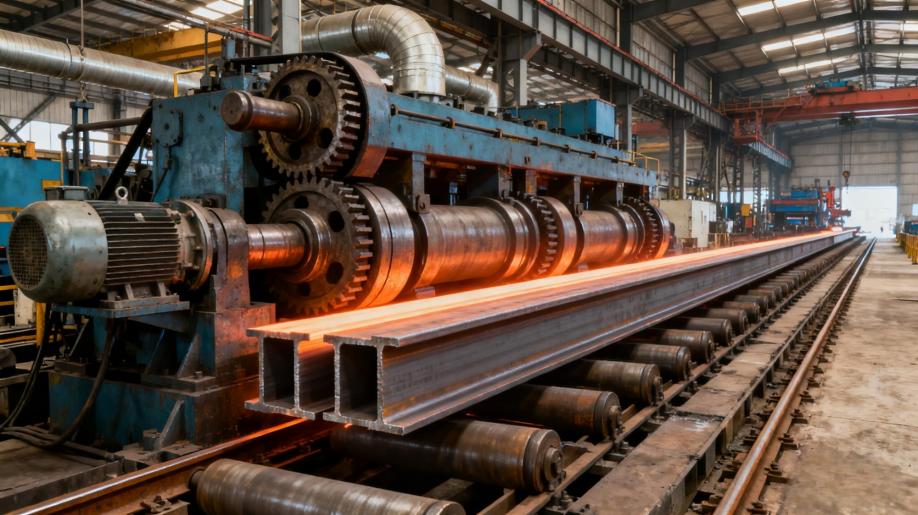
Date: 2025-10-31

Category: Metallurgical encyclopedia terms

Views: 131
Its core function is to realize the synchronous forming of the flanges and web of the H-beam through the coordinated rolling of multiple rolls, which greatly improves the dimensional accuracy of the product section and production efficiency. It is a key piece of equipment that distinguishes itself from traditional section steel rolling. In the H-beam production line, the universal rolling mill needs to coordinate with the equipment of the preceding and subsequent processes to form a complete production line. Its core lies in realizing the transformation of H-beams from steel billets to finished products through the process of "rough processing - precise forming - finishing".
Through the combination of horizontal rolls and vertical rolls, it acts on the web (horizontal direction) and flanges (vertical direction) of the H-beam simultaneously. Its key structures and components are as follows:
1.Core Stand Structure
-Horizontal Rolls: Responsible for rolling the web thickness and height of the H-beam. The web dimensions are controlled by adjusting the reduction amount of the upper and lower horizontal rolls.
-Vertical Rolls: Closely attached to the inner and outer sides of the H-beam flanges, they control the thickness and width of the flanges. Meanwhile, they prevent flange "bulging" (protrusion in the middle of the flange) or "corner collapse" (angular deviation at the joint between the flange and the web).
2.Key Functional Components
II. The Technological Core of the Universal Rolling Mill Lies in "Phased Forming + Precision Shape Control". It gradually optimizes the H-beam section through multi-pass rolling, while reducing defects by integrating process control. The specific processes and characteristics are as follows:
1. Typical Rolling Process Flow
(1) Rough Rolling Stage (Universal Roughing Mill): The intermediate billet after blooming undergoes 3-5 rolling passes. Its main task is to adjust the web height and flange width of the intermediate billet to 80%-90% of the finished product specification. At this stage, the reduction amount is relatively large (5-15 mm per pass), with the key focus on eliminating internal stress in the steel billet.
(2) Intermediate Rolling Stage (Universal Intermediate Mill): It conducts 2-3 rolling passes to further refine the section dimensions. Through the "side pressing" effect of the vertical rolls, the thickness uniformity of the flanges is corrected. Meanwhile, the flatness of the web is controlled to avoid "wavy" deformation.
(3) Finishing Rolling Stage (Universal Finishing Mill): Only 1-2 rolling passes are performed here, with a small reduction amount (1-3 mm per pass). The core goal is to control the dimensional accuracy of the finished product, ensuring that the deviations of the H-beam's height, web thickness, and flange width all comply with the GB/T 11263 standard (e.g., height deviation ≤ ±2 mm). Additionally, it improves the surface roughness (Ra ≤ 12.5 μm).
2. Core Process Technology Characteristics


Phone



Address